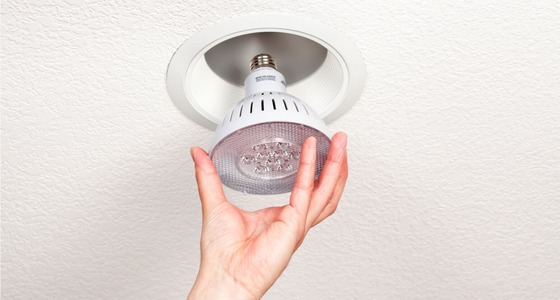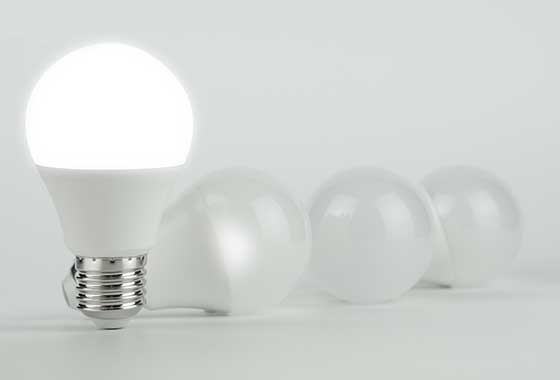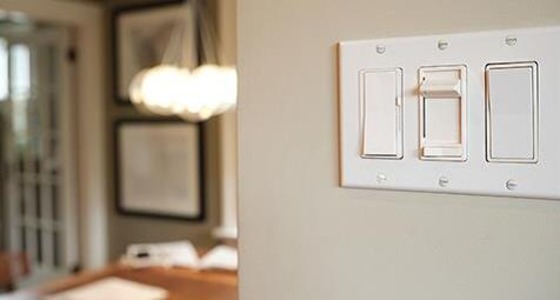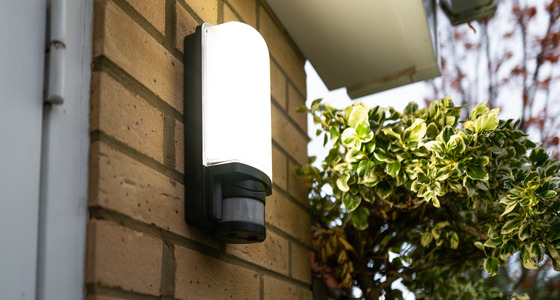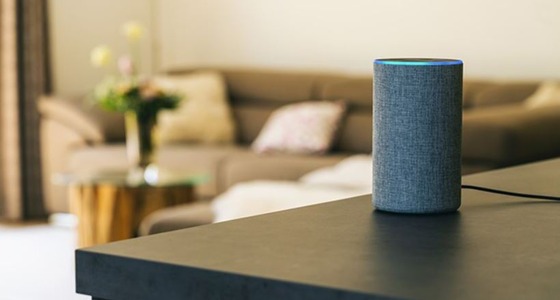Guide to LED lights for your home
LED (light-emitting diode) bulbs have long been the superior energy-efficient lighting option and their technology has come a long way since they were first introduced. They’re now available in a variety of sizes, shapes, colours, and brightness levels for both in and outside of the home.
On this page:
- Benefits of LEDs
- When to replace incandescent bulbs
- How to read an LED light bulb package
- Understanding LED bulb lifespans
- Light bulb disposal
Benefits of LED light bulbs
Ready to leave incandescent lighting in the dark? ENERGY STAR® LEDs are the most efficient lighting technology – at least 75% more energy efficient than incandescent bulbs.
By replacing an incandescent with a LED, you could save $75 in electricity over the lifetime of the LED bulb. And because LEDs can last up to 10 to 15 years, you won't have to replace bulbs nearly as often.
When to replace incandescent bulbs
We recommend that you change a lot of bulbs to LEDs at once.
Slowly replacing incandescent bulbs with LEDs as the incandescents burn out will feel less wasteful, but you won't see a noticeable difference in your electricity consumption, or your electric bill, for a while.
If you change most or all of your incandescent bulbs to LEDs within one billing period, you'll see the difference right away. Plus, the amount you’ll save in electricity costs during the time it would have taken for the incandescent bulbs to burn out could cover the cost of the new LED bulb.
And from an environmental perspective, if you factor in the energy wasted to power an incandescent bulb compared to an LED, it's actually less wasteful to toss a still-functioning incandescent bulb than to wait for it to burn out.
However, if you do decide to replace incandescents with LEDs one at a time, ensure that the bulbs used most often are replaced with LEDs first to take advantage of the energy savings.
How to read an LED light bulb package
Follow these tips to help guide your LED bulb purchase.
Choose ENERGY STAR bulbs
To make sure you're getting the most bang for your buck, opt for ENERGY STAR LEDs. These have been evaluated and tested for performance and are at least 75% more energy efficient than incandescent bulbs.
LED bulb electricity use
The electricity a bulb uses is measured in watts (W). You'll see much smaller numbers on LEDs, between 9W and 15W, than on traditional bulbs, which typically use between 40W and 60W.
- 9W LED bulb is comparable to a 40W incandescent bulb
- 11W LED bulb is comparable to a 60W incandescent bulb
Bulb types
We've put together a guide of the types of LED light bulbs available [PDF, 30 KB] and where they’re used around the home. It outlines which bulbs are best for lamps, bathroom vanities, wall sconces and pendant lighting, recessed and track lighting, outdoor lighting and more.
Bulb brightness and light output
The brightness of a light bulb is measured in lumens (lm). The higher the lumens, the brighter the bulb. Fewer lumens means it's a dimmer light. LEDs produce the same amount of light (lumens) as traditional incandescent bulbs while using much less electricity.
- LED: 11W | 900lm
- Incandescent: 60W | 800lm
Select the right lumens based on the location in your home. For example, you may want brighter bulbs in the bathroom than you would in a lamp on a side table.
Select the right colour
When picking LED bulbs, you can also choose your light colour. Light colour is measured in Kelvins, the higher the number, the whiter and cooler the light. The lower the number, the more yellow or warmer the light.
- Warm white: 2700K to 3000K
- Cool white, neutral, bright white: 3500K to 4100K
- Natural or daylight: 5000K to 6500K
Colour rendering index (CRI)
This is how the bulb shows the colours of objects accurately on a scale of 0 to 100. As a general rule, the higher the better; light bulbs with high CRI (80 to 100) tend to make people and objects look better than light bulbs with lower CRIs.
Understanding LED bulb lifespans
While LED bulbs typically last about 10 times longer than incandescents, some find that they don't live up to manufacturer claims of up to 10 years or 25,000 hours, for example. It's important to keep in mind that claims about the lifespan of an LED bulb assume a modest amount of usage, typically three hours per day, and ideal conditions.
Some factors that can impact the lifespan of LEDs:
- Faulty wiring or bulb circuitry
- Exposure to hot or humid conditions
- Enclosed fixtures that aren't meant for LED bulbs
- Incompatible fixtures
- Incompatible dimmer switches
Those factors can also impact the performance of LEDs, sometimes causing flickering or an audible hum when the light is turned on.
How to safely dispose of old lights
Don't throw away your old bulbs in the trash. Visit Product Care to find a B.C. light recycling location near you.
